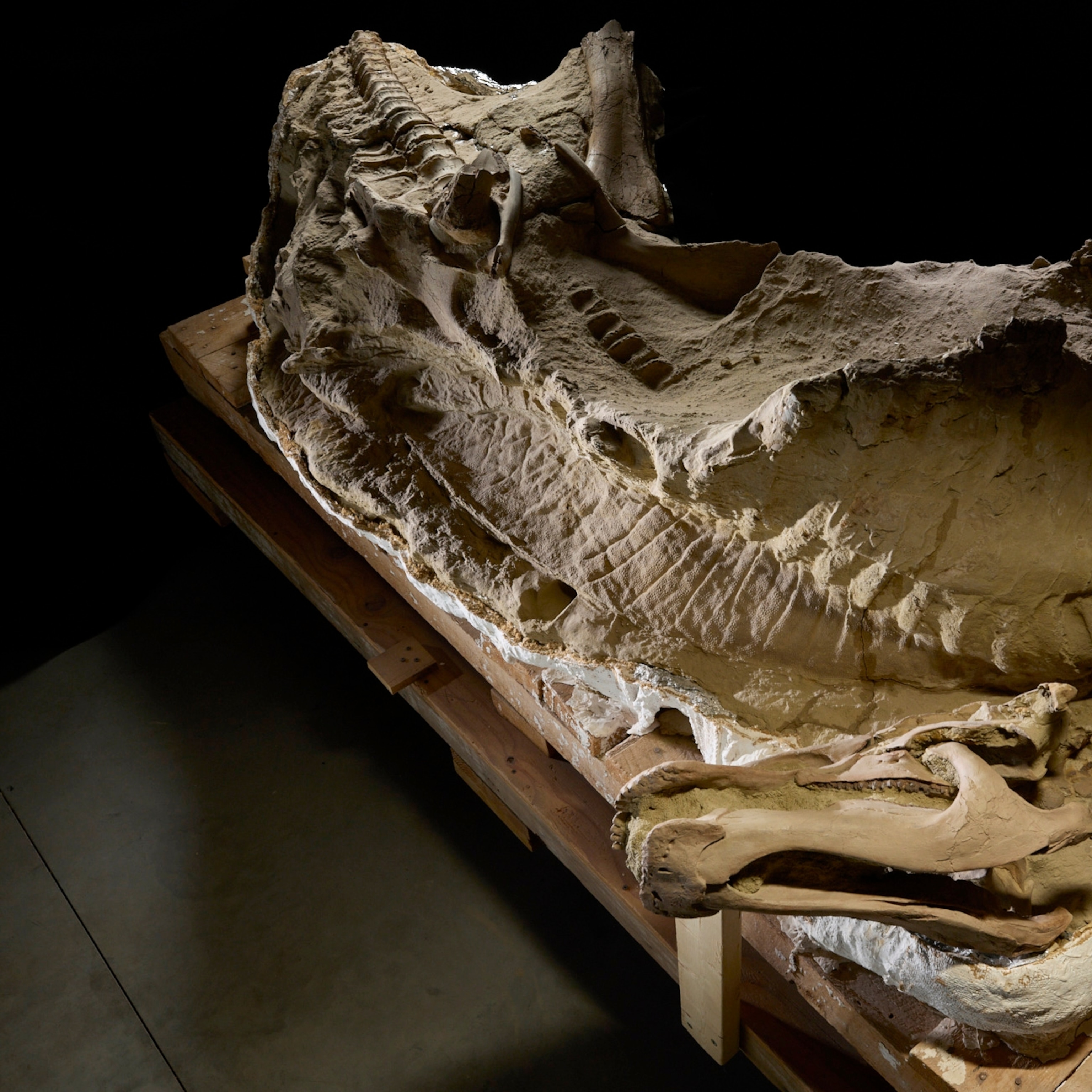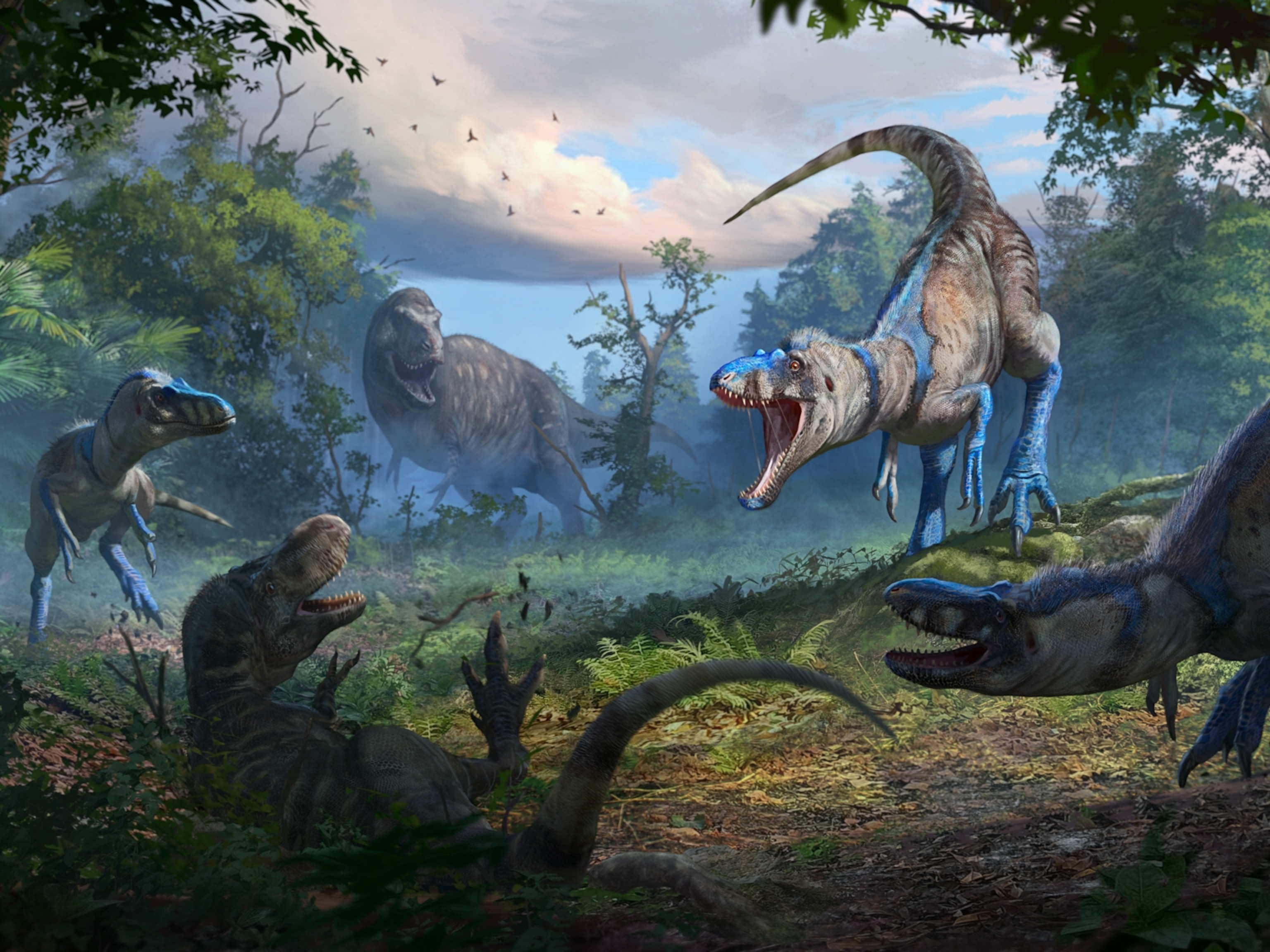Did this ancient croc hunt dinosaurs on land?
The new fossil was unearthed in a remote part of Argentinian Patagonia—and had teeth comparable to a T. rex, says National Geographic Explorer Diego Pol.
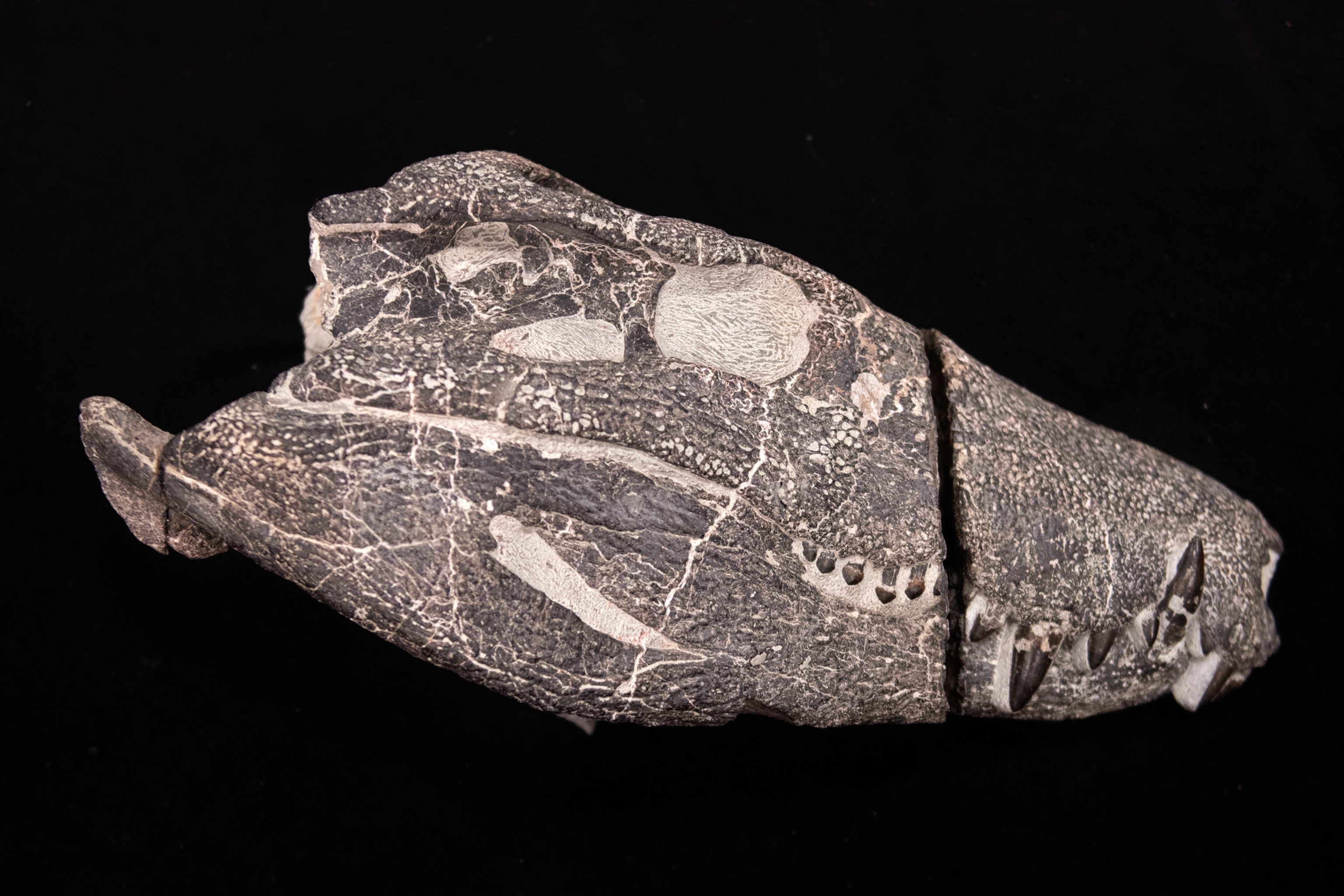
Near the dusk of the dinosaurs, some 70 million years ago, an ancient crocodile prowled the floodplains of what is now the southern tip of Patagonia, its sinister smile lined with more than fifty sharp, serrated teeth.
Named Kostensuchus atrox, this extinct species of croc was a hypercarnivore, meaning it feasted almost exclusively on meat. It was also an apex predator that had “teeth that are comparable to a T. rex,” conical and knife-like, says Diego Pol, a paleontologist and National Geographic Explorer who helped discover the new species. With its massive jaw muscles built for tearing apart flesh, Pol says, Kostensuchus “can break you in two pieces with a single bite.”
He and his colleagues at the Museo Argentino de Ciencias Naturales Bernardino Rivadavia in Buenos Aires, along with researchers from Brazil and Japan, described the species’ exquisitely well-preserved skull and partial skeleton on August 27 in the journal PLOS One.
Though it’s smaller than the largest crocodiles and alligators found today, the team thinks Kostensuchus may have had longer, more upright limbs than its modern counterparts, which they say would have helped it hunt prey—including dinosaurs—on land.
But some researchers not involved in the study aren't convinced.
Kostensuchus’ discovery in southern Patagonia, close to Antarctica, indicates that ancient relatives of crocodiles in the Cretaceous thrived on land and at high latitudes in warm, humid environments that are now often buried beneath snow and ice.
“It gives us an idea of how dramatically the climate has changed since then,” says Pol.
(Read more about some of Patagonia’s other recent fossil finds.)
A long-lost crocodile relative
Today’s crocodiles and their many living and extinct relatives are part of a broad group called crocodyliforms. Within that group Kostensuchus atrox belonged to an extinct family called peirosaurids, distant cousins of modern crocodiles, alligators, gharials, and caimans, but not their direct ancestor.
(Crocodiles Body Surf to Hop Between Islands)
These extinct croc cousins, many of whom lived on land, perished in the same mass extinction event 66 million years ago that killed all non-avian dinosaurs. Kostensuchus atrox is the latest-known peirosaurid in the fossil record, as well as the southernmost ever-found. It is also one of the best-preserved and most complete peirosaurids discovered thus far.
(Ancient Arboreal Mammal Discovered at Root of Carnivore Family Tree)
“This is a really beautiful fossil from a very unusual, poorly-understood part of the croc family tree,” says Stephanie Drumheller-Horton, a vertebrate paleontologist from the University of Tennessee, Knoxville who was not involved in the work.
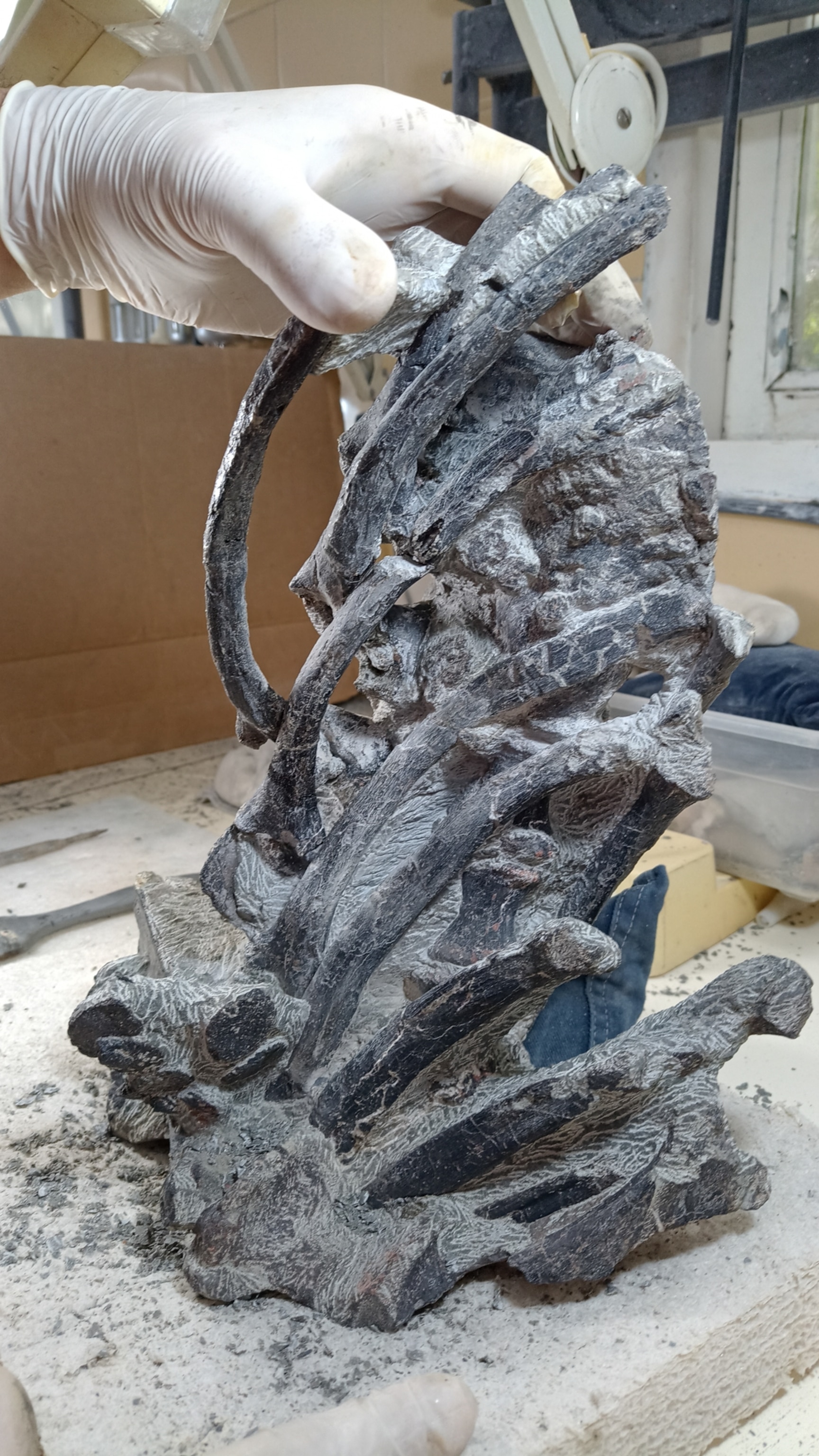
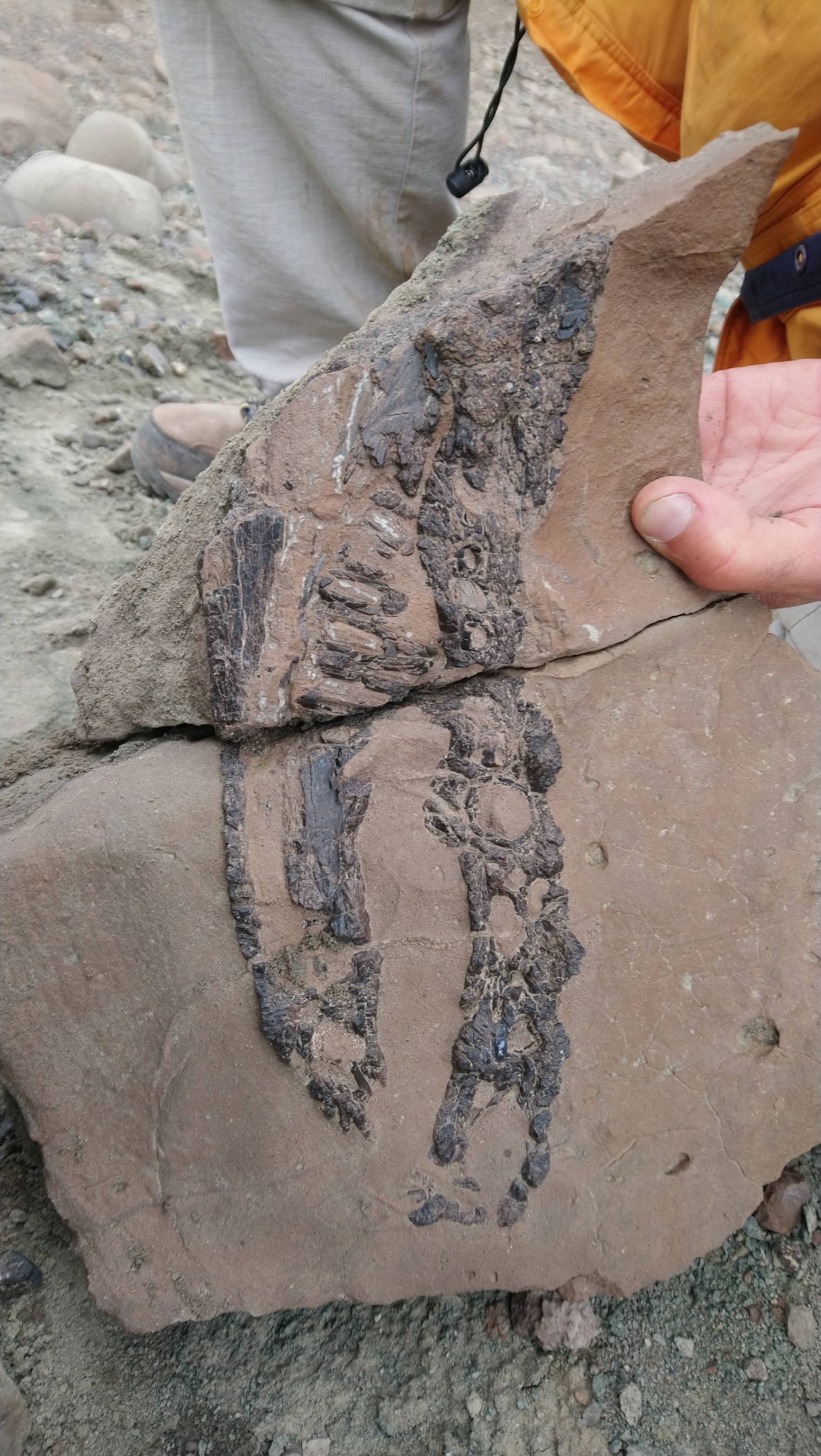
“That’s a skull!”
In early March 2020, museum paleontologists Fernando Novas and Marcelo Isasi set out for Argentina’s Chorrillo Formation to search for the bones of dinosaurs and other ancient creatures. In this same area, they and their colleagues had previously found the megaraptor Maip macrothorax, the titanosaur Nullotitan glaciaris, and the ornithopod Isasicursor santacrucensis (which bears Isasi’s name).
“The Chorrillo bedrocks constitute a formidable ‘window’ into an ancient ecosystem which may offer novel clues about the last dinosaurs in Patagonia,” says Novas.
Perched on a hill, the rocks at the site date to about 70-million years ago. To get there, they drove trucks three hours across rivers, up slopes, and on the edge of cliffs with scenic views of Lake Argentino and the Perito Moreno Glacier emerging from the Andes.
After setting up camp on the first day of the field expedition, the team of more than 30 researchers and technicians walked several miles through the mountains carrying heavy scanning equipment and machines but didn’t spot much.
“Then, with the last rays of sun, our luck changed,” says Isasi.
While the rest of the team went back to camp, he stayed behind with his colleague Gabriel Lio, a paleoartist, to wait for a team member who hadn’t checked in. As time went on, they began to worry and decided to search for him. In the distance, they heard a shout from their missing colleague. Feeling a sense of relief, Isasi started to slow his pace as he walked through a spot with large rocks and calcium concretions. There, embedded within a beige rock something caught Isasi’s eye: black bones.
“I showed it to my colleague, who, astonished, said, ‘Marcelo, those are teeth, and they're very big!’” says Isasi. “I immediately looked up and saw a break in the rock with an unmistakable silhouette, and I said, ‘That's a skull!’”
Lio, an expert on fossilized crocodiles, immediately identified the skull as belonging to a croc. In addition to the skull, they also excavated from within the rocks the reptile’s partial skeleton, which looked larger and much more complete than any they had seen before.
“It was a marvelous, incredible, and unforgettable moment!” says Isasi.
Preparing a fossil during a global pandemic
While the team was camping, the COVID-19 pandemic sent the world into lockdowns. With only a weak cell signal reaching them on the mountain ridge, they had little idea what was happening in the rest of the world. Then on March 24 they had to suspend their field work. They attempted to return to a nearby city called El Calafate, but it was under lockdown. They had to then spend ten days confined inside cabins.
Finally, Novas secured permits for the team to travel from the site, so the researchers loaded the fossils into trucks. They transported their bounty some 1,500 miles from southern Patagonia to Buenos Aires on an empty road.
“I remember the line of trucks bringing explorers, camping gear and valuable new fossils traveling alone as in a science fiction movie,” says Novas.
In Buenos Aires, social distancing made the museum’s lab forbidden territory, so Novas asked Isasi to bring the heavy fossil block with the skull home. It was so large that Isasi had to recruit the help of his wife, Emilia, and two children, Tomás and Lara, to drag it out of his vehicle and into his patio.
He dedicated the next six months to chipping away the rock with high-precision pneumatic hammers. In time the large, black and shining teeth emerged menacingly from under the snout, Novas says.
The skull was short, measuring about 20 inches long, and its snout was broad. Snaggleteeth jutting from its mouth measured up to two inches long and, relative to its skull, were larger than those of modern crocodiles and most other extinct crocs. Its skull and lower jaw suggest it had high muscle insertions that would have produced a powerful bite.
These clues, the researchers say, support Kostensuchus’ status as a hypercarnivore and apex predator. It likely hunted small and midsized herbivores, possibly ornithischians, like small ankylosaurs and hadrosaurs.
Was this croc a landlubber?
Following many months of meticulous work by technicians, the Kostensuchus atrox bones finally emerged from the rocks.
“It's a very slow process of discovery,” filled with drama and tension, says Pol. “I love that part, because more and more surprises appear every day in the lab.”
Once finished, the team had also uncovered its neck, back, hip bones, ribs, and parts of a forelimb. Missing were the tail and most of the hindlimbs. Compared to modern crocs, Kostensuchus had a longer forelimb, hinting that it may have held itself upright and walked on land rather than spent most of its time in the water.
Eric Willberg, a vertebrate paleontologist from Stony Brook University in New York who wasn’t part of the team, says the terrestrial evidence is mixed. The croc’s pelvis, he says, suggests the hindlimb may have sprawled outward, like modern crocodiles, rather than fully upright like in mammals and other extinct terrestrial crocodyliforms.
The forelimb traits could alternatively reflect an adaptation for seizing and tearing prey rather than for moving around, Pol and his colleagues acknowledge. But without the hindlimb bones it’s hard to reconstruct how it moved and subdued its prey, notes Adam Cossette, a vertebrate paleontologist at the New York Institute of Technology.
The authors estimate that Kostensuchus measured 11.5 feet long and weighed about 550 pounds by extrapolating from modern caimans and alligators. Though the specimen is “truly impressive,” Pedro Godoy, a vertebrate paleontologist from the University of São Paulo in Brazil, notes that these living species may have different body proportions from what extinct terrestrial crocodyliforms had.
(This ancient croc was bigger than most dinosaurs.)
When Cretaceous crocs clash
The backbones of Kostensuchus showed evidence of healed fractures, says Pol, which may support their idea that the crocs fought each other.
“Combat or aggression due to food or territorial [behaviors] is one of the possible scenarios for getting injured,” says Pol. To imagine how such clashes might have unfolded between the Cretaceous crocs, the team created a video reconstruction.
In it a Kostensuchus gnaws at the carcass of a fresh dinosaur kill when a rival approaches, possibly drawn by the smell. The two exchange snarls before rearing onto their hindlimbs and slamming their massive bodies against each other, like how Komodo dragons duke it out.
A cornucopia of croc diversity
Though the fossil bed where Kostensuchus was found dates to 70 million years ago, Pol thinks Kostensuchus lived even closer in time to the extinction event. If so, Kostensuchus provides scientists with further insight into the extraordinary diversity of Cretaceous crocodyliforms right before they were wiped out.
People typically think that ancient crocs all resembled the low-slung, semi-aquatic ambush predators lurking in murky waters today. But during the Cretaceous and earlier there were crocs that were herbivores, giant carnivores and even had armor like an armadillo.
“They were very diverse until the very end,” says Pol. He suspects the reason we no longer see this same diversity among crocs today is because ancient crocs who survived the extinction event were most likely those adapted to living in freshwater environments like rivers and lakes, which were less devastated in the aftermath of the asteroid impact.
“There’s this persistent idea that crocs are ‘living fossils,’ but it doesn’t take a lot of digging to find a lot of fun, weird species,” says Drumheller-Horton. “It’s also a great reminder that even though we call it the ‘Age of Dinosaurs,’ dinosaurs weren’t the only game in town.”


